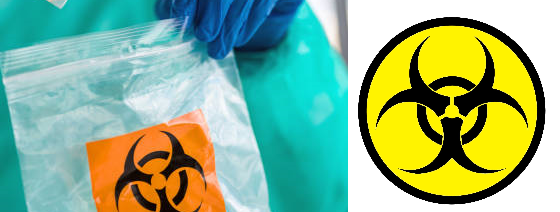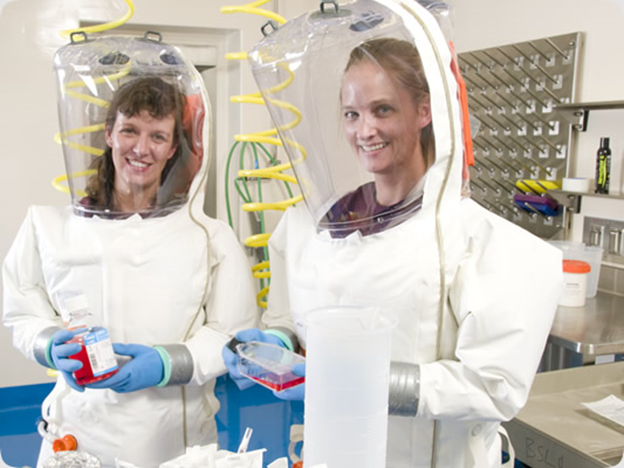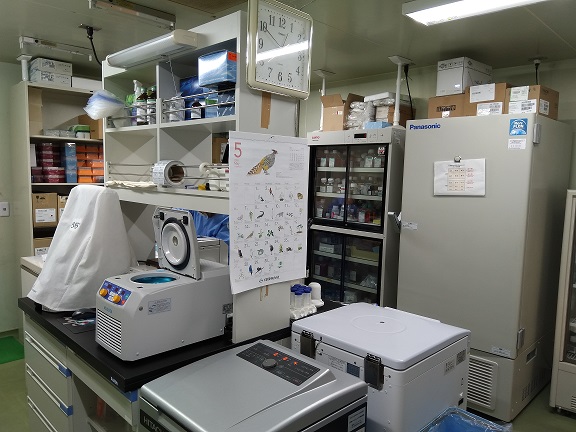Microbiological risk assessment (MRA) is a structured process that is used for determining the public health risk associated with biological hazards in a given environment such as water, land, cosmetics, medications, food, air etc. Risk assessment is the backbone of the general practice of biosafety in any environment. Personnel involved in assessing public health risk in any environment (including the industry) should be able to use their professional training and judgement to ascertain the level of risk that a given procedure, experiment or process possess to human, animal or environmental health. Microbiological risk assessment is an important aspect of keeping everyone including the environment safe and healthy and free from the transmission of infectious disease agents or pathogens because risks from microbiological hazards are of immediate and serious concern to human, animal and environmental health.
Risk assessment can be qualitative or quantitative in nature. In quantitative risk assessment, the level of public health risk is quantified or estimated through series of microbiological experiments that include identification of the hazard, assessing the level of exposure, identifying the right model for the assessment and finally, characterizing the likelihood of a person or population to get infected by the pathogen or become affected by the risk. Generally, a quantitative risk assessment is a risk assessment that provides numerical expressions of risk and indication of the attendant uncertainties. A qualitative risk assessment is a risk assessment based on data which, while forming an inadequate basis for numerical risk estimations, nonetheless, when conditioned by prior expert knowledge and identification of attendant uncertainties permits risk ranking or separation into descriptive categories of risk.
Only personnel specifically trained for risk assessment should be allowed to carry out the process of microbiological risk assessment. This is because such persons have been trained and have the professional experience to identify the specific features of the pathogen or microorganisms being considered for use, the instrument or equipment, as well as the facilities available for the process. Such personnel involved in risk assessment work hand-in-hand with the institutions biosafety unit to ensure that the right equipment and facilities are available for the process. It is also important to ensure that the risk assessment performed is reviewed from time to time to ensure that they meet realities on ground since information changes from time to time.
It is also important to be aware of the risk groups of microbiological agents (RISK GROUP 1-4) to know the level of risk that the agents or pathogens possess to the environment or human population.
Important factors to consider in microbiological risk assessment are as follows:
- Pathogenicity of the pathogen and its infectious dose.
- Potential outcome of the exposure.
- Natural route of infection of the pathogen.
- Other routes of infection, resulting from laboratory manipulations such as ingestion, airborne or parenteral).
- Stability of the pathogen in the environment.
- Concentration of the pathogen and volume of concentrated material to be manipulated.
- Presence of a suitable host such as animals, plants or humans.
- Information available from animal studies and reports of laboratory-acquired infections or clinical reports.
- Laboratory activities planned (e.g., centrifugation, aerosolization).
- Any genetic manipulation of the pathogen that may extend host range of the organism or change the sensitivity of the pathogen to known, effective and available antimicrobial (antibiotic) agents or treatment.
- Local availability of effective prophylaxis or therapeutic interventions.
After ascertaining the level of risk, it is important to ensure that the right working tools such as personal protective equipment (PPE) and standard operating procedures (SOPs) are incorporated into the planned work or assessment in order to ensure that the work is conducted under the strictest and safest approaches there is.
Definition of terms in microbiological risk assessment
- Dose-Response Assessment – The determination of the relationship between the magnitude of exposure (dose) to a chemical, biological or physical agent and the severity and/or frequency of associated adverse health effects (response).
- Exposure Assessment – The qualitative and/or quantitative evaluation of the likely intake of biological, chemical, and physical agents via food as well as exposures from other sources if relevant.
- Hazard – A biological, chemical or physical agent in, or condition of, food with the potential to cause an adverse health effect.
- Hazard Characterization – The qualitative and/or quantitative evaluation of the nature of the adverse health effects associated with the hazard. For the purpose of microbiological risk assessment the concerns relate to microorganisms and/or their toxins.
- Hazard Identification – The identification of biological, chemical, and physical agents capable of causing adverse health effects and which may be present in a particular food or group of foods.
- Quantitative Risk Assessment – A risk assessment that provides numerical expressions of risk and indication of the attendant uncertainties.
- Qualitative Risk Assessment – A risk assessment based on data which, while forming an inadequate basis for numerical risk estimations, nonetheless, when conditioned by prior expert knowledge and identification of attendant uncertainties permits risk ranking or separation into descriptive categories of risk.
- Risk – A function of the probability of an adverse health effect and the severity of that effect, consequential to a hazard(s) in food.
- Risk Analysis – A process consisting of three components: Risk assessment, risk management and risk communication.
- Risk Assessment – A scientifically based process consisting of the following steps: (i) hazard identification, (ii) hazard characterization, (iii) exposure assessment, and (iv) risk characterization.
- Risk Characterization – The process of determining the qualitative and/or quantitative estimation, including attendant uncertainties, of the probability of occurrence and severity of known or potential adverse health effects in a given population based on hazard identification, hazard characterization and exposure assessment.
- Risk Communication – The interactive exchange of information and opinions concerning risk and risk management among risk assessors, risk managers, consumers and other interested parties.
- Risk Estimate – Output of risk characterization.
- Risk Management – The process of weighing policy alternatives in the light of the results of risk assessment and, if required, selecting and implementing appropriate control options, including regulatory measures.
- Sensitivity analysis – A method used to examine the behavior of a model by measuring the variation in its outputs resulting from changes to its inputs.
- Transparent – Characteristics of a process where the rationale, the logic of development, constraints, assumptions, value judgements, decisions, limitations and uncertainties of the expressed determination are fully and systematically stated, documented, and accessible for review.
- Uncertainty analysis – A method used to estimate the uncertainty associated with model inputs, assumptions and structure/form.
Risk assessment for specimens for which there is limited data
For some specimens such as those collected from field work (e.g., in cases of a novel outbreak of an infectious disease process), it may be difficult to work with available information because the risk is new. In such situations where the information is insufficient to perform an appropriate risk assessment (e.g., with clinical specimens or epidemiological samples collected from field studies), the following approaches can be adopted:
- Standard sample processing techniques and precautions should be adopted and adhered to at all times. This may include working with gloved hands, gowns, eye protection gears and other PPEs.
- Basic containment such as biosafety level 2 practices and procedures should be the minimum requirement for handling the collected samples.
- Transport of specimens should also follow the approved national and/or international guidelines.
In addition to these, the medical history of the patient, other medical data, epidemiological data (e.g., mortality and morbidity data, suspected routes of transmission, and other outbreak investigation data), as well as information on the geographical origin of the specimen should also be made available and worked with. Proper guidelines should be put in place for diseases of unknown origin or etiology.
GENERAL PRINCIPLES OF MICROBIOLOGICAL RISK ASSESSMENT
- Microbiological risk assessment should be soundly based upon science.
- There should be a functional separation between risk assessment and risk management.
- Microbiological risk assessment should be conducted according to a structured approach that includes hazard identification, hazard characterization, exposure assessment, and risk characterization.
- A microbiological risk assessment should clearly state the purpose of the exercise, including the form of risk estimate that will be the output.
- The conduct of a microbiological risk assessment should be transparent.
- Any constraints that impact on the risk assessment such as cost, resources or time, should be identified and their possible consequences described.
- The risk estimate should contain a description of uncertainty and where the uncertainty arose during the risk assessment process.
- Data should be such that uncertainty in the risk estimate can be determined; data and data collection systems should, as far as possible, be of sufficient quality and precision that uncertainty in the risk estimate is minimized.
- A microbiological risk assessment should explicitly consider the dynamics of microbiological growth, survival, and death in foods and the complexity of the interaction (including sequelae) between human and agent following consumption as well as the potential for further spread.
- Wherever possible, risk estimates should be reassessed over time by comparison with independent human illness data.
- A microbiological risk assessment may need reevaluation, as new relevant information becomes available.
Source
www.fao.org
www.who.int
Discover more from #1 Microbiology Resource Hub
Subscribe to get the latest posts to your email.



